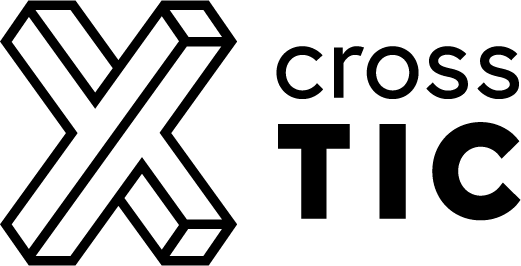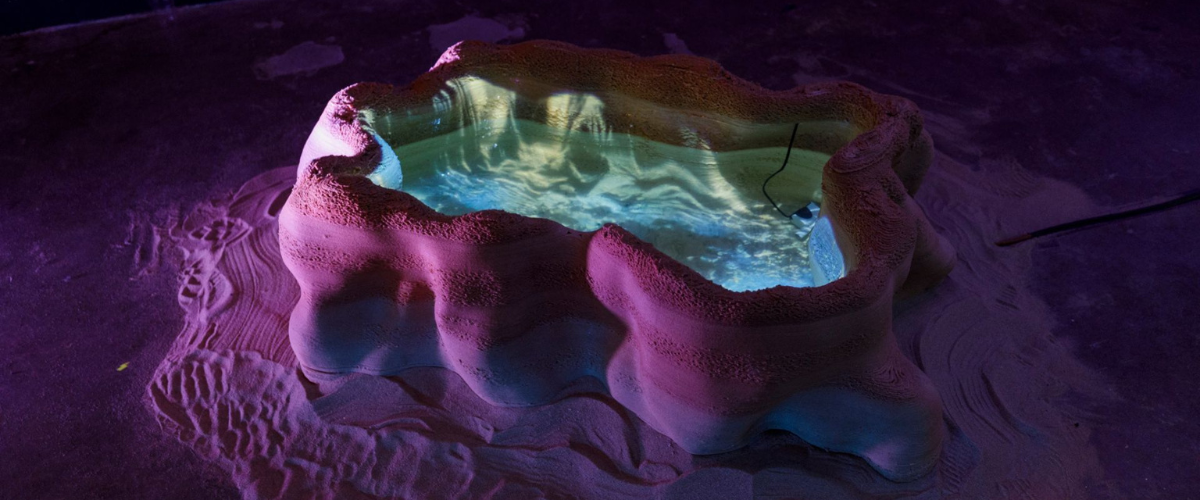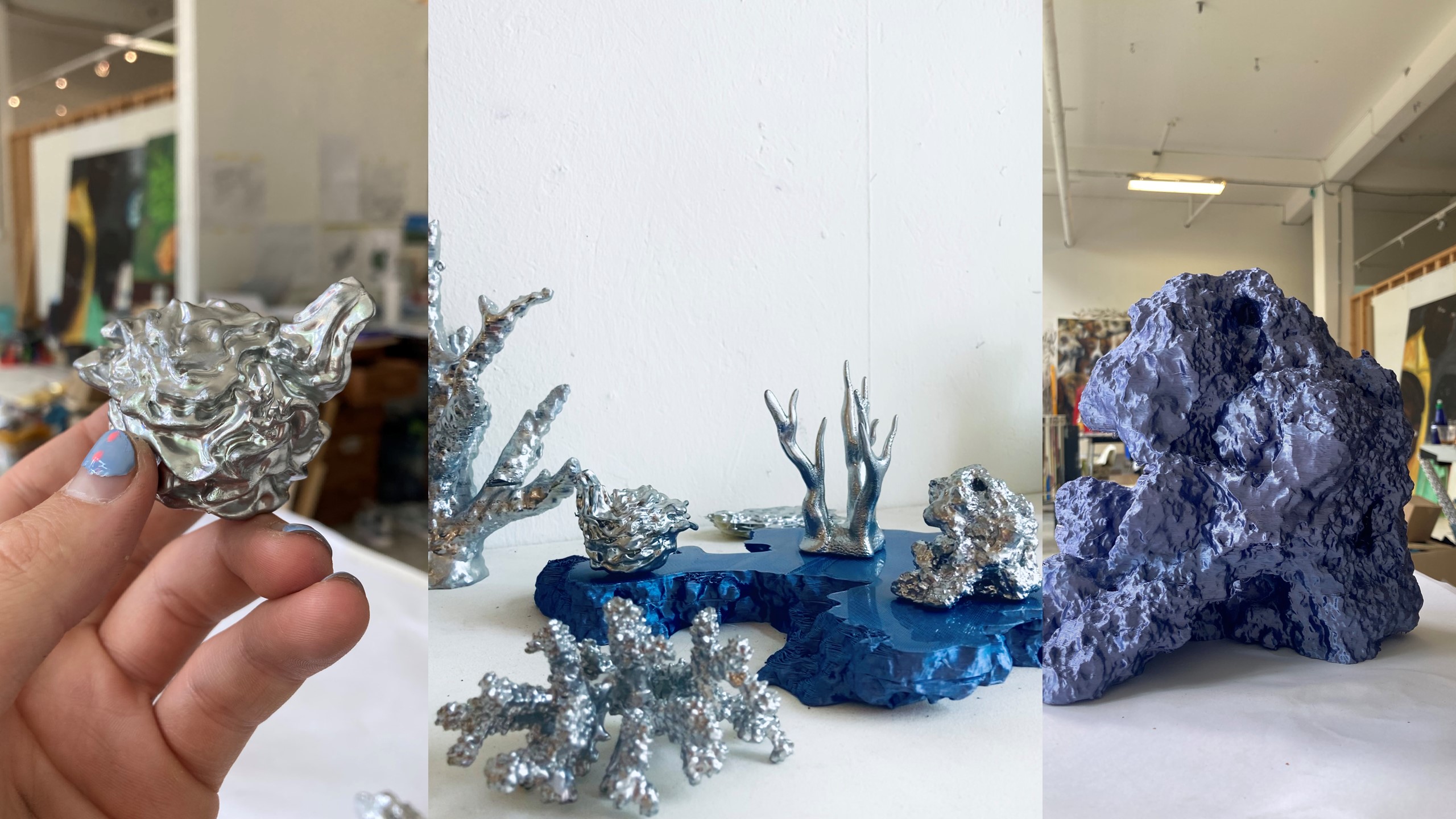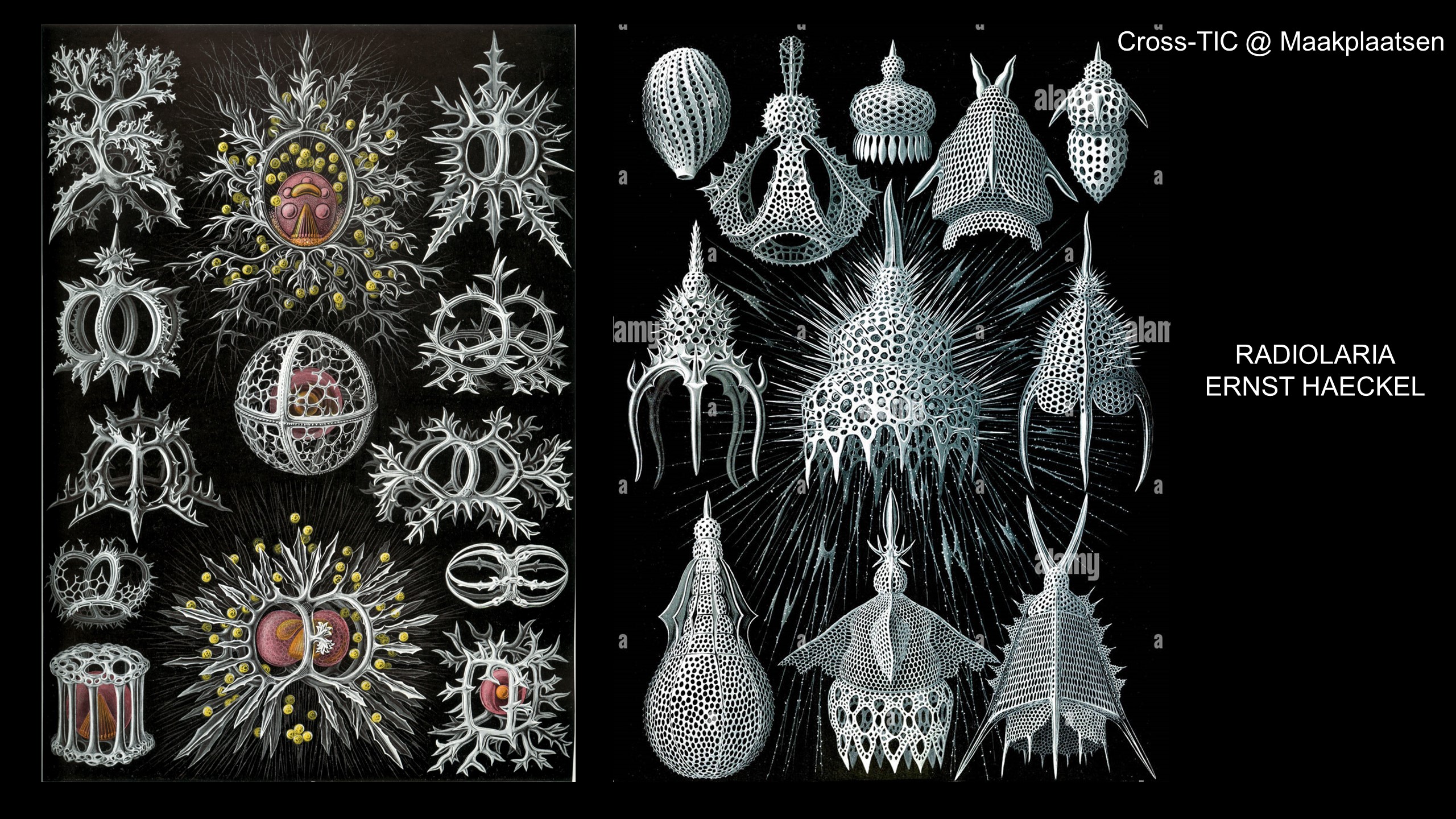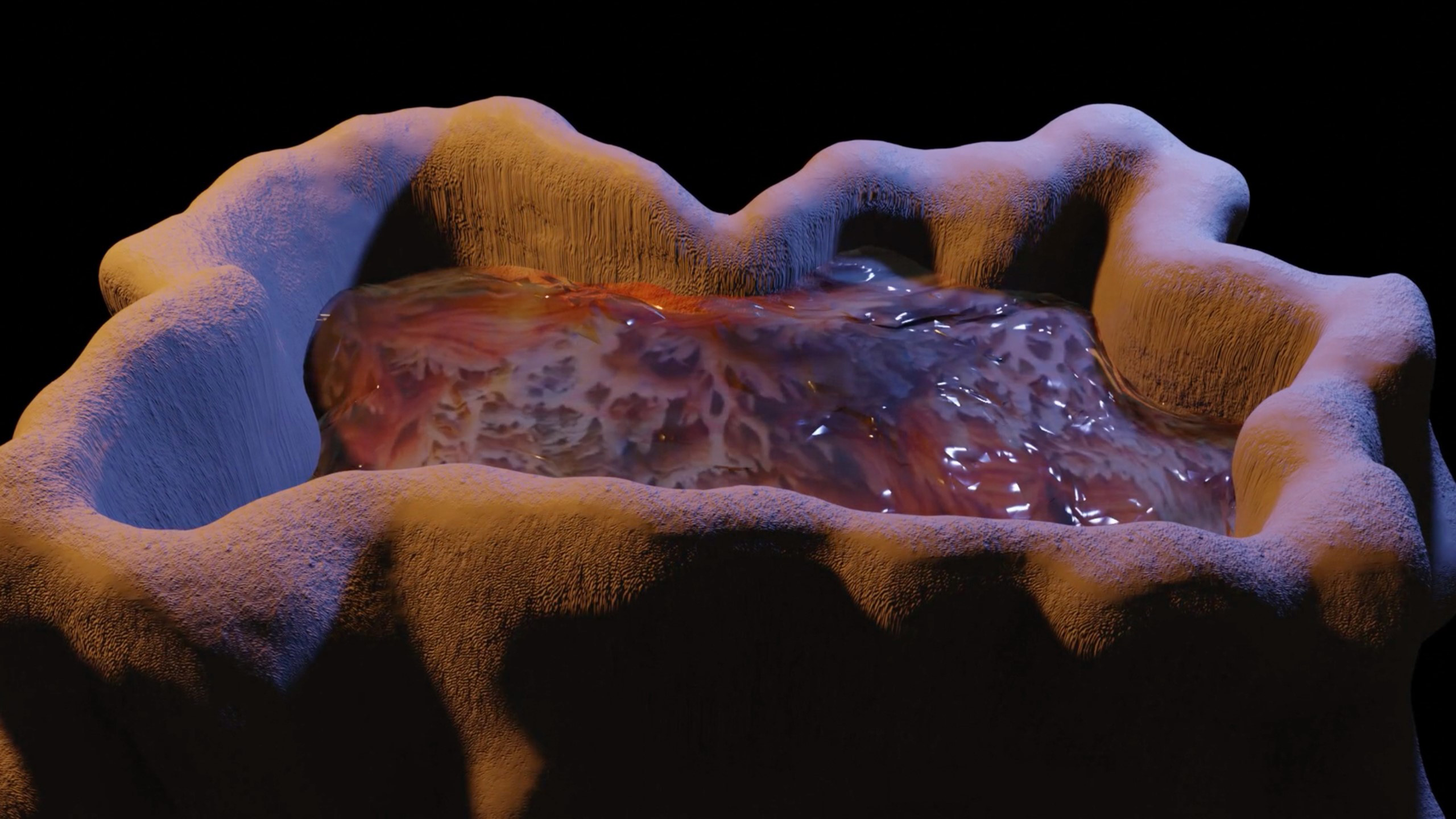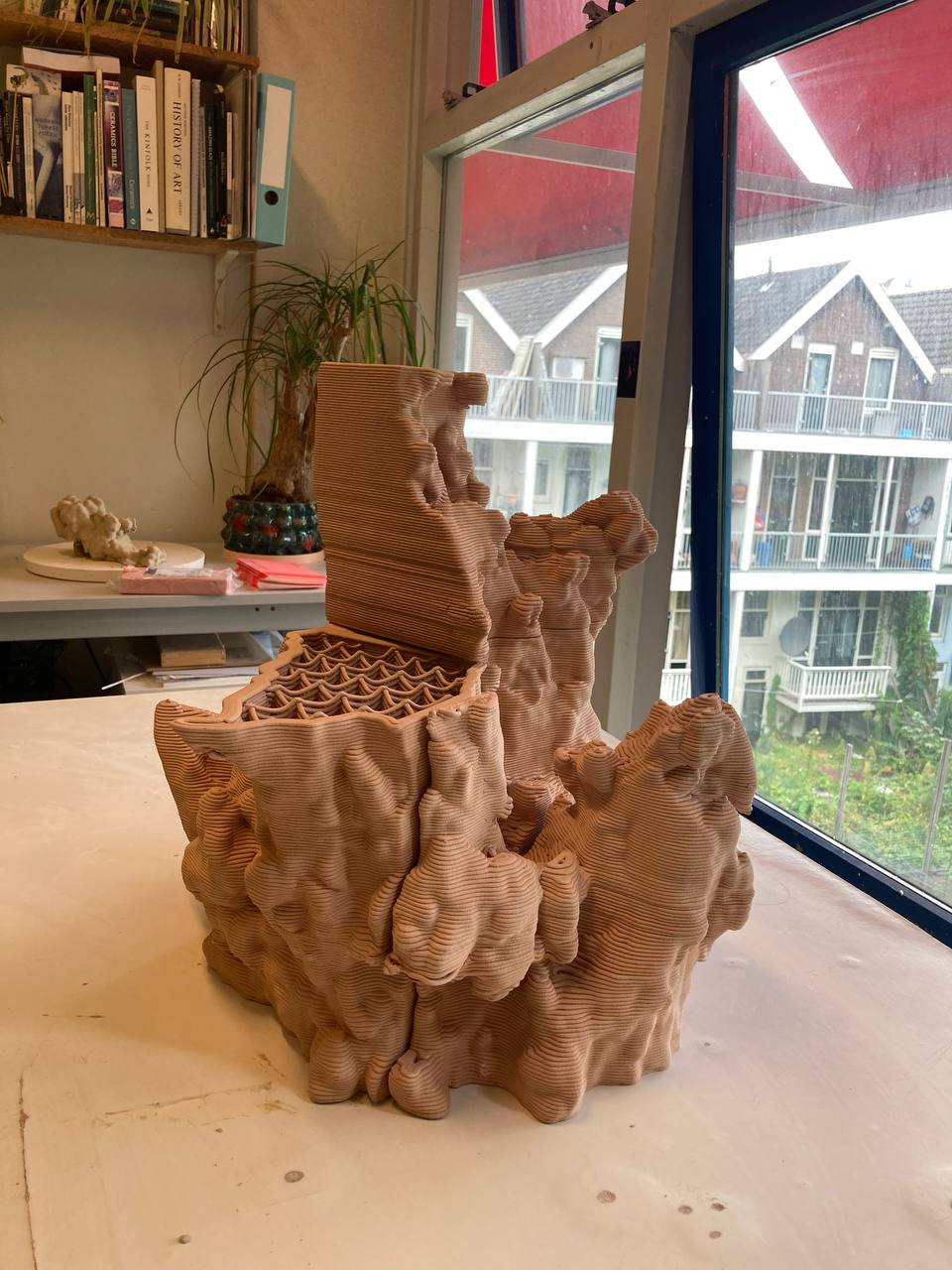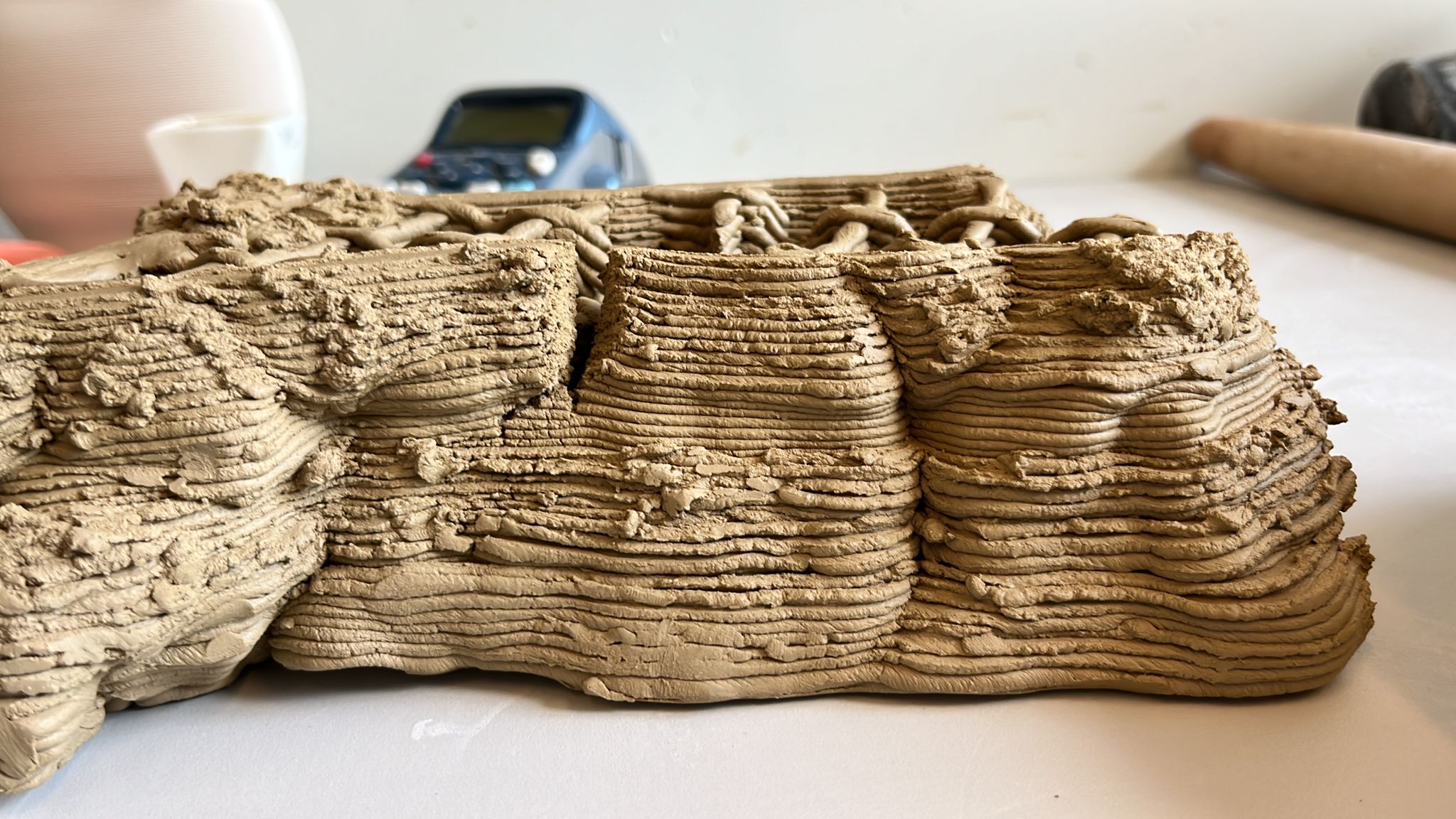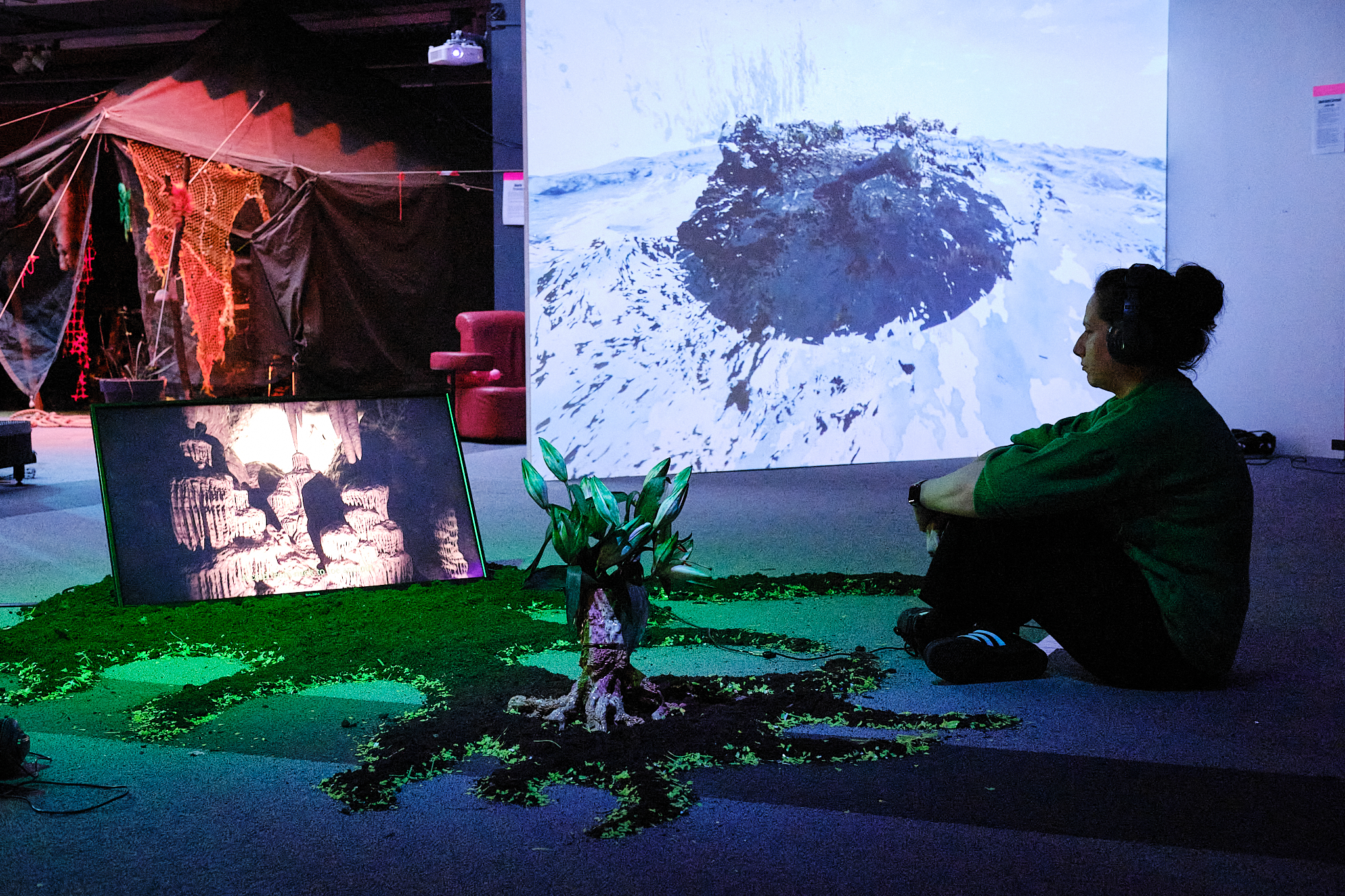… considered the impact of micro-plastics on our future coral reefs and created a new reef from 3D printed clay.
… Onderzoekt de kloof tussen mythe en wetenschap. Wat kunnen we leren van oceanenfolklore wanneer we deze kennis combineren met wetenschap en klimaatvoorspellingen met behulp van kunstmatige intelligentie?
Erik is interested in the influence humans have on their natural environment: thus, his research revolved around the coral reef of the future. How does (micro)plastic affect these reefs? And what will those future fossils look like? He worked with skeletons that were scanned, rendered as 3D models and then 3D printed in clay. Similarly, he explored how technology mediates how we perceive our environment
Within their Crosstic Research at Breeding Places, Erik explores the gap between myth and science. The Netherlands as a country below sea level that has built a lot of artificial land, it is a country where the relationship to nature and water is dictated by control, technology and design. Countries where weather conditions are much more severe and where cyclones and hurricanes are regular occurrences have, by their reality, a very different relationship to stories of natural hazards. In view of the global sea level rising and a future marked by climate crisis, what can we learn from ocean folklore when we combine this knowledge with science and climate predictions using artificial intelligence?
About the creator
Erik Peters is an interdisciplinary artist who uses speculative storytelling to stage new narratives that explore the changing relationship between humans, ecology and technology in times of planetary crisis.
